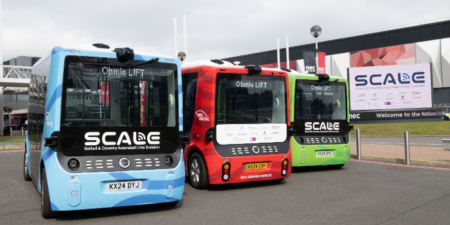Already collaborating with other industry partners in the European SCOOP cooperative intelligent transport systems (C-ITS) project, Groupe Renault and Sanef are expanding their partnership to further develop communications between autonomous vehicles (AVs) and road infrastructure, which will include testing on toll barrier crossing and the approach to work zones.
Motorway operator Sanef and Renault are currently working together on the European SCOOP C-ITS project, which is using short range wi-fi (ITS G5) to provide vehicle-to-vehicle/infrastructure (V2X) connectivity, with trials taking place at different sites in France. The partners are now expanding their cooperation to trial the use of the project’s technologies to include AVs, with the long-term aim of increasing road safety to reach zero fatality levels, and improving the driver experience.
An operation as simple as crossing a toll barrier or a road works zone represents a major challenge for AVs to provide continuous travel in eyes-off/hands-off mode. In June 2016, Renault and Sanef launched a specific pilot project in Normandy along the A13 highway using the connected infrastructure (V2X) developed by Sanef, to study the approach and crossing of toll barriers and work zones by autonomously driven Renault vehicles. The experimentation is due to continue until mid-2018.
The vehicle receives information about 3,280ft (1km) before the barrier of the toll lanes that are available and compatible with autonomous driving. Before approaching the zone, the vehicle will anticipate its position in the lane, and adapt its speed by gradually slowing down according to the speed signs, which is critical in the absence of road markings.
To ensure its guidance, the autonomous Renault vehicles use virtual lines derived from a high definition map of the site. Access to the dedicated lane is performed at a speed of less than 18.6mph (30km/h), while the sensors maintain the car in the center of the lane. Once road markings are restored on the other side of the gates, the AV can continue its route normally.
“Maximizing safety for drivers, passengers and others with autonomous cars requires several stakeholders in both government and the private sector working together, each bringing unique expertise,” explained Mathieu Lips, Renault’s program leader. “Our goal is to work with Sanef to develop advances in safety and the right solutions to bring as soon as possible to customers the most comfortable travel in autonomous drive without interruption.”




